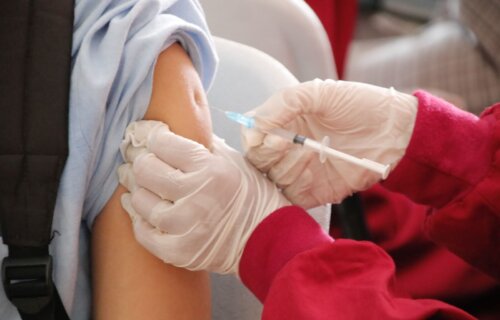RIVERSIDE, Calif. — Each year, scientists do their best to predict which four influenza strains are most likely to dominate the upcoming flu season. Those determinations dictate the influenza shots countless people receive on an annual basis. The same goes for COVID-19 vaccines, which have undergone reformulation multiple times already in order to target variants of the most prevalent strains in circulation. Now, however, a major vaccine breakthrough may put the days of chasing strains and endless boosters firmly behind us all for good.
Researchers at the University of California-Riverside have successfully demonstrated a new, RNA-based vaccine strategy that appears effective against any strain of a given virus and is capable of safe use among both infants or the immunocompromised.
All in all, the study authors believe this new approach could eliminate the need to create different booster shots every year. How is this possible? The new strategy targets a part of the viral genome that is common to all strains of a virus.
“What I want to emphasize about this vaccine strategy is that it is broad,” says UCR virologist and study author Rong Hai in a university release. “It is broadly applicable to any number of viruses, broadly effective against any variant of a virus, and safe for a broad spectrum of people. This could be the universal vaccine that we have been looking for.”
Traditionally, a vaccine contains either a dead or modified, live version of a virus. The body’s immune system recognizes a protein in the virus and subsequently mounts an immune response. That response produces T-cells that attack the virus, stopping it from spreading. This reaction also produces “memory” B-cells that train the immune system to protect itself from future attacks.
This new vaccine uses a live, modified version of a virus. However, it does not rely on the vaccinated body performing a traditional immune response or having immune active proteins — which is why it is safe for use in babies with underdeveloped immune systems or other people suffering from a disease that may compromise or overwork the immune system. Alternatively, the new vaccine relies on small, silencing RNA molecules.
“A host — a person, a mouse, anyone infected— will produce small interfering RNAs as an immune response to viral infection. These RNAi then knock down the virus,” adds Shouwei Ding, distinguished professor of microbiology at UCR, and lead paper author.

Viruses are so adept at spreading and causing disease due to their ability to produce proteins that block a host’s RNAi response.
“If we make a mutant virus that cannot produce the protein to suppress our RNAi, we can weaken the virus. It can replicate to some level, but then loses the battle to the host RNAi response,” Prof. Ding continues. “A virus weakened in this way can be used as a vaccine for boosting our RNAi immune system.”
When researchers tested this strategy with a mouse virus called Nodamura, they did so with mutant mice lacking T and B cells. With just one vaccine injection, they noted the mice enjoyed protection from a lethal dose of the unmodified virus for a minimum of 90 days. Keep in mind some studies show nine mouse days are about equivalent to one human year.
Few current vaccines are suitable for use in babies younger than six months-old. However, even newborn mice produce small RNAi molecules – explaining why the vaccine protected them as well. UC Riverside was recently issued a U.S. patent for this RNAi vaccine technology. In 2013, the very same research team published another paper showing that flu infections also induce us to produce RNAi molecules.
“That’s why our next step is to use this same concept to generate a flu vaccine, so infants can be protected. If we are successful, they’ll no longer have to depend on their mothers’ antibodies,” Prof. Ding notes.
Their flu vaccine will probably come in the form of a spray since lots of people have a major aversion to needles.
“Respiratory infections move through the nose, so a spray might be an easier delivery system,” Hai adds.
Moreover, researchers add there is little chance of a virus mutating to avoid this vaccination strategy.
“Viruses may mutate in regions not targeted by traditional vaccines. However, we are targeting their whole genome with thousands of small RNAs. They cannot escape this,” Hai says.
Ultimately, the research team believes they can “cut and paste” this strategy to create a one-and-done vaccine for numerous viruses.
“There are several well-known human pathogens; dengue, SARS, COVID. They all have similar viral functions,” Prof. Ding concludes. “This should be applicable to these viruses in an easy transfer of knowledge.”
The study is published in the Proceedings of the National Academy of Sciences.

Can I get the Vaccine through my Doctor? Does the VA have this Vaccine?
Let’s not rush this. 4 to 7 years of data is needed to distinguish any unforeseen side effects or issues. Hope this translates to many other viruses. Fingers crossed.